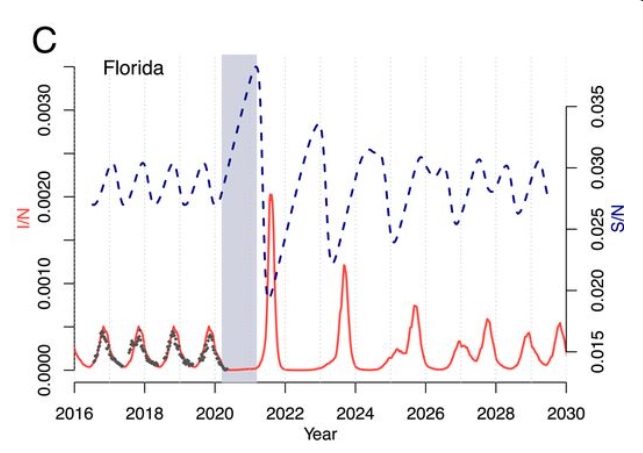The impact of COVID-19 nonpharmaceutical interventions on the future dynamics of endemic infections
Rachel E. Baker, PNAS first published November 9, 2020;
Significance
Nonpharmaceutical interventions (NPIs), such as social distancing, reduce not only COVID-19 cases but also other circulating infections such as influenza and RSV. The susceptible population for these infections will increase while NPIs are in place. Using models fit to historic cases of RSV and influenza, we project large future outbreaks of both diseases may occur following a period of extended NPIs. These outbreaks, which may reach peak numbers in the winter, could increase the burden to healthcare systems.
Abstract
Nonpharmaceutical interventions (NPIs) have been employed to reduce the transmission of severe acute respiratory syndrome coronavirus 2 (SARS-CoV-2), yet these measures are already having similar effects on other directly transmitted, endemic diseases. Disruptions to the seasonal transmission patterns of these diseases may have consequences for the timing and severity of future outbreaks.
Here we consider the implications of SARS-CoV-2 NPIs for two endemic infections circulating in the United States of America: respiratory syncytial virus (RSV) and seasonal influenza. Using laboratory surveillance data from 2020, we estimate that RSV transmission declined by at least 20% in the United States at the start of the NPI period. We simulate future trajectories of both RSV and influenza, using an epidemic model. As susceptibility increases over the NPI period, we find that substantial outbreaks of RSV may occur in future years, with peak outbreaks likely occurring in the winter of 2021–2022.
Longer NPIs, in general, lead to larger future outbreaks although they may display complex interactions with baseline seasonality. Results for influenza broadly echo this picture, but are more uncertain; future outbreaks are likely dependent on the transmissibility and evolutionary dynamics of circulating strains.














